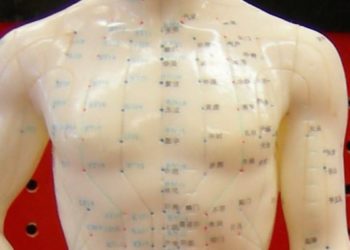Minisling non-inferior to transobturator sling
1. At 12 months of follow-up, the self-anchoring minisling was non-inferior to the transobturator sling for treatment of stress urinary incontinence.
2. Both treatments significantly improved subjective and objective incontinence symptoms.
Evidence Rating Level: 1 (Excellent)
Study Rundown: Urinary incontinence affects up to 35 percent of women and can be personally and financially debilitating. Caused by urethral sphincter dysfunction, stress urinary incontinence causes a woman to lose control of her bladder with exertion, such as when coughing or exercising. Fortunately, effective surgical treatments, including placement of a retropubic synthetic midurethral mesh sling, which adds additional support to the urethra, has been shown to be effective. However, this approach is also associated with risk of bladder performation and pelvic hematomas that can occur during trocar placement through the urogenital diaphragm, retropubic space or the two lower abdominal skin incisions where the trocars exit. In attempts to minimize complication rates of sling placement, a transobturator approach was subsequently developed and involves passage of trocars through the obturator canal. Unfortunately, this approach has also been found to be associated with worrisome side effects, including obturator neuropathies. A new approach called the minisling involves placement of a piece of mesh with self-anchoring mechanism that obviates trochar passage and thus should theoretically prevent a number of worrisome complications associated with the established surgical treatments for incontinence. This multi-site randomized trial, researchers compared the efficacy of a minisling, the Miniarc, with the transobturator sling, the Monarc.
After 12 months, the self-anchoring minisling was non-inferior to the transobturator sling for treatment of stress urinary incontinence and both treatments conferred cure rates greater than 90 percent. Strengths of the study included the randomized design and external validity whereby inclusion of women being concurrently treated for prolapse broadens applicability of results. Limitations included the use of supine cough stress test with a subjectively full bladder, a less specific than cough stress test performed after retrofilling a standard volume. Head-to-head trials comparing the minisling to the current standard of care, the retropubic midurethral sling, are needed.
Click to read the study in AJOG
Relevant Reading: Single-Incision mini-slings versus standard midurethral slings in surgical management of female stress urinary incontinence
In-Depth [randomized trial]: Women with stress urinary incontinence were randomized to receive either a self-anchoring minisling (n=112), a minisling, or a transobturator sling (n=113). The primary outcome was objective success, defined as negative cough stress test with a subjectively full bladder, at 12 months after surgery. The secondary outcome was subjective success, defined as no report of leakage with coughing or exercise on a patient questionnaire.
One year after surgery, there was no significant difference in treatment success among patients randomized to receive the minisling compared to the transobturator sling by both objective (94.4% vs. 96.7%, p=0.50) and subjective assessment (92.2% vs. 94.2%, p=0.78). Both treatments were highly effective, with >90% cure rates.
More from this author: 20% lifetime risk of pelvic floor surgery in women, Individualized pelvic floor muscle training improves prolapse symptoms, In elderly, robotic surgery for endometrial cancer linked with lower morbidity
Image: CC/Anatomy & Physiology, Connexions Web site. http://cnx.org/content/col11496/1.6/Wikimedia Commons
©2014 2 Minute Medicine, Inc. All rights reserved. No works may be reproduced without expressed written consent from 2 Minute Medicine, Inc. No article should be construed as medical advice and is not intended as such by the authors, editors, staff or by 2 Minute Medicine, Inc.







